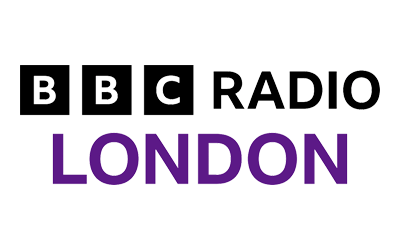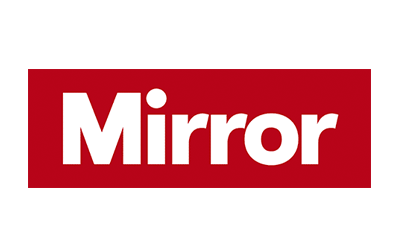In this two-part blog, leading London plastic surgeon Mr Alex Karidis looks at the latest buzzword in facial rejuvenation surgery: the deep plane facelift. In this part, he covers the fundamentals of facial anatomy, the evolution of facelift techniques since the procedure was first performed at the beginning of the 20th century, and why the skill of the plastic surgeon is always the most important factor in producing the optimal result. Yet again, in light of the latest trendy social media and marketing buzz swirling around the so-called ‘deep plane facelift’, it seems that I’m pushed to defend my technique or viewpoints concerning facelift surgery. The age-old question of which facelift technique is the ‘best’ or ‘most superior’ continues to rage on, as it did when I first started training in plastic surgery or even when I set up my private practice nearly 30 years ago. I shouldn’t be surprised at this, as the advent of social media and other recent marketing avenues in the last few years has given rise to and opened up a whole new platform for some to promote whatever ‘latest and greatest’ technique surgeons wish to push in the public eye to gain a perceived advantage over the ever-increasing competition. So, let’s look to see exactly what the deep plane facelift is and how it fits in with what we already know about facial rejuvenation surgery. I suppose it’s always best to start from the fundamentals. Every human face, like any other area of the body, comprises layers of tissue. The most superficial layer is the skin, of course, and underneath the skin is a fatty layer (of various thicknesses). Then, there is a relatively thin muscular layer, known as the SMAS (Superficial Muscular Aponeurotic System). The SMAS extends into the neck, where it becomes known as the platysma muscle. The skin is connected to the SMAS via tiny connections called fibrous septae, which you can think of as a network of small ropes hitching the underside of the skin, traversing through the fatty tissue layer, and ending up attached to the superficial surface of the SMAS. Under the SMAS layer resides a whole network of nerves, arteries, veins, and glands, as well as many more specific facial muscles responsible for the fine and gross facial movements we all use to express ourselves with every minute we’re alive. All the above, of course, sits nicely on our facial bony skeleton. When surgeons first started performing facelifts over 100 years ago, the focus was on lifting or correcting facial laxity by simply lifting and pulling the skin. The problem with this approach is that the correction was never very long-lasting, as the skin is not a very durable tissue, producing an unnatural or stretched look. If you pull on the skin alone in order to tighten it and then stitch it back without being able to take any of the ‘tension forces’ out of the skin, something invariably gives. Either the skin stretches and loosens, giving rise to unnatural-looking stretched swags of skin or, ultimately, the ensuing scar where the skin is stitched to stretches, as scars are even less durable than skin! Our knowledge of facelift surgery and facial anatomy evolved over the years, and new techniques were developed to give a more sustained and natural-looking result. The aim was to remove any ‘tension forces’ off the skin layer and redistribute these into the somewhat sturdier, deeper layer and improve the repositioning and direction of these tissues in a more ‘natural’ way to enhance the outcome further. As a result, ‘deeper’ surgical techniques were devised to optimise results. Plastic surgeons realised in the 1970s, when we clearly defined the aforementioned SMAS layer, that it was a critical tissue layer that also needed to be addressed to tackle the ageing process. We understood that by being in such proximity to the skin, the SMAS layer would also be subjected to the laws of physics and ageing and that it, too, also stretched and loosened to a certain degree. Therefore, the SMAS layer needed to be addressed as well. The basic premise was that lifting the skin and tightening the SMAS layer (which withstands tension forces much better than skin) provided a solid foundation for the skin to sit on. The lifted and advanced skin subsequently sits on this layer with very little tension, producing a more youthful, natural and lasting outcome. As a result, various techniques were described where surgeons would manipulate and address the SMAS layer in a multitude of different ways (lifting the SMAS, cutting the SMAS, stitching the SMAS, different vector positioning etc). Of course, as with most medical innovations, with every new technique described, the authors would suggest that their technique was perhaps the latest and greatest. The truth is, however, that pretty much all the SMAS layer facelift techniques that have been described work very well to one degree or another, with some having slight advantages, disadvantages, compared to others whilst others have some limitations and or risks attached. The point is, though, that with such a wide array of different techniques available, surgeons were left to decide which one(s) would work best for them in their hands and their patient base so that they could then adapt and master these to their advantage to serve our community better. And these techniques, on the whole, have served us very well over the last 30 to 40 years, provided they’re executed skillfully by an experienced surgeon who has performed hundreds if not thousands of these procedures over many years. But of equal fundamental importance, is that the surgeon also needs to clearly understand what the ultimate aim is and what the patient’s concerns are, as well as be confident and able to target these issues in a bespoke, tailored way that suits the patient’s wishes and requests as much as possible. We offer both deep plane facelifts and SMAS facelifts here at Karidis Clinic, get in touch with our team to discuss your options today. In the second part of this deep dive into facelift surgery, I’ll explain exactly what the deep plane facelift is and answer some of your most frequently asked questions. If you wish to discuss your ageing concerns and which facelift technique is most appropriate, call 0207 432 8727 to arrange a consultation with Mr Alex Karidis. 
Our facial anatomy and the ageing process
The evolution of facial rejuvenation surgery
The importance of the SMAS layer in facelift surgery
What is the deep plane facelift and why is everyone talking about it?
















